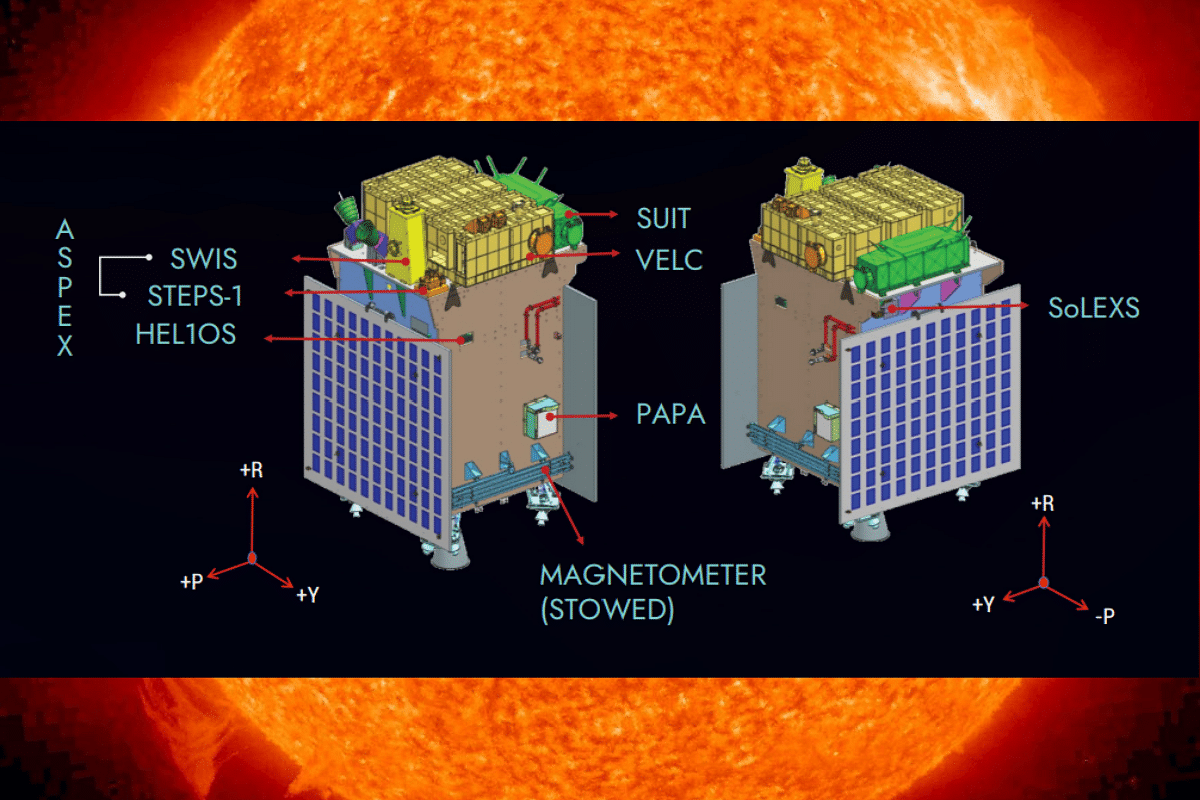Science
Aditya-L1: First Science Is In — This Data Will Help Uncover Particle Behaviour Surrounding Earth

Scientific instruments on Aditya-L1
India's space-based solar mission, Aditya-L1, has started doing science while still in Earth orbit.
The Indian Space Research Organisation (ISRO) said Monday (18 September) that a scientific instrument on the Aditya Solar Wind Particle EXperiment (ASPEX) has commenced the collection of scientific data.
The instrument in question is the Supra Thermal & Energetic Particle Spectrometer (STEPS).
STEPS is a high-energy spectrometre designed to measure high-energy ions of the solar wind.
The data it throws up can help scientists analyse the behaviour of particles around Earth, especially in the presence of the planet's magnetic field.
STEPS was developed by the Physical Research Laboratory (PRL) with support from the Space Applications Centre (SAC), both in Ahmedabad, Gujarat.
ASPEX, of which STEPS is a part, is designed to study the solar wind and energetic ions, as well as their energy distribution.
The other ASPEX payload (besides STEPS) is the Solar Wind Ion Spectrometer (SWIS), a low-energy spectrometre designed to measure the proton and alpha particles of the solar wind.
STEPS got to work on 10 September, after Aditya-L1 had moved 50,000 kilometres beyond Earth in its orbit around the planet, taking it past Earth's radiation belt region, according to ISRO.
The six sensors on the instrument, each pointing in a different direction, recorded suprathermal and energetic ions ranging from 20 keV/nucleon to 5 MeV/nucleon and electrons exceeding 1 MeV.
The low- and high-energy particle spectrometres were used to make the measurements.
ISRO reports that all units of STEPS are operating within the normal parameters.
The space agency has shared a figure which records measurements, picked up by one of the units, depicting variations in the energetic particle environment within Earth's magnetosphere.
The STEPS measurements will carry on during the cruise phase of the Aditya-L1 mission as the solar probe makes its way towards the Sun-Earth Lagrange point 1 (L1), as well as after it has been placed in orbit around L1.
"Data collected around L1 would provide insights into the origin, acceleration, and anisotropy of solar wind and space weather phenomena," ISRO said.
Support Swarajya's 50 Ground Reports Project & Sponsor A Story
Every general election Swarajya does a 50 ground reports project.
Aimed only at serious readers and those who appreciate the nuances of political undercurrents, the project provides a sense of India's electoral landscape. As you know, these reports are produced after considerable investment of travel, time and effort on the ground.
This time too we've kicked off the project in style and have covered over 30 constituencies already. If you're someone who appreciates such work and have enjoyed our coverage please consider sponsoring a ground report for just Rs 2999 to Rs 19,999 - it goes a long way in helping us produce more quality reportage.
You can also back this project by becoming a subscriber for as little as Rs 999 - so do click on this links and choose a plan that suits you and back us.
Click below to contribute.
Latest